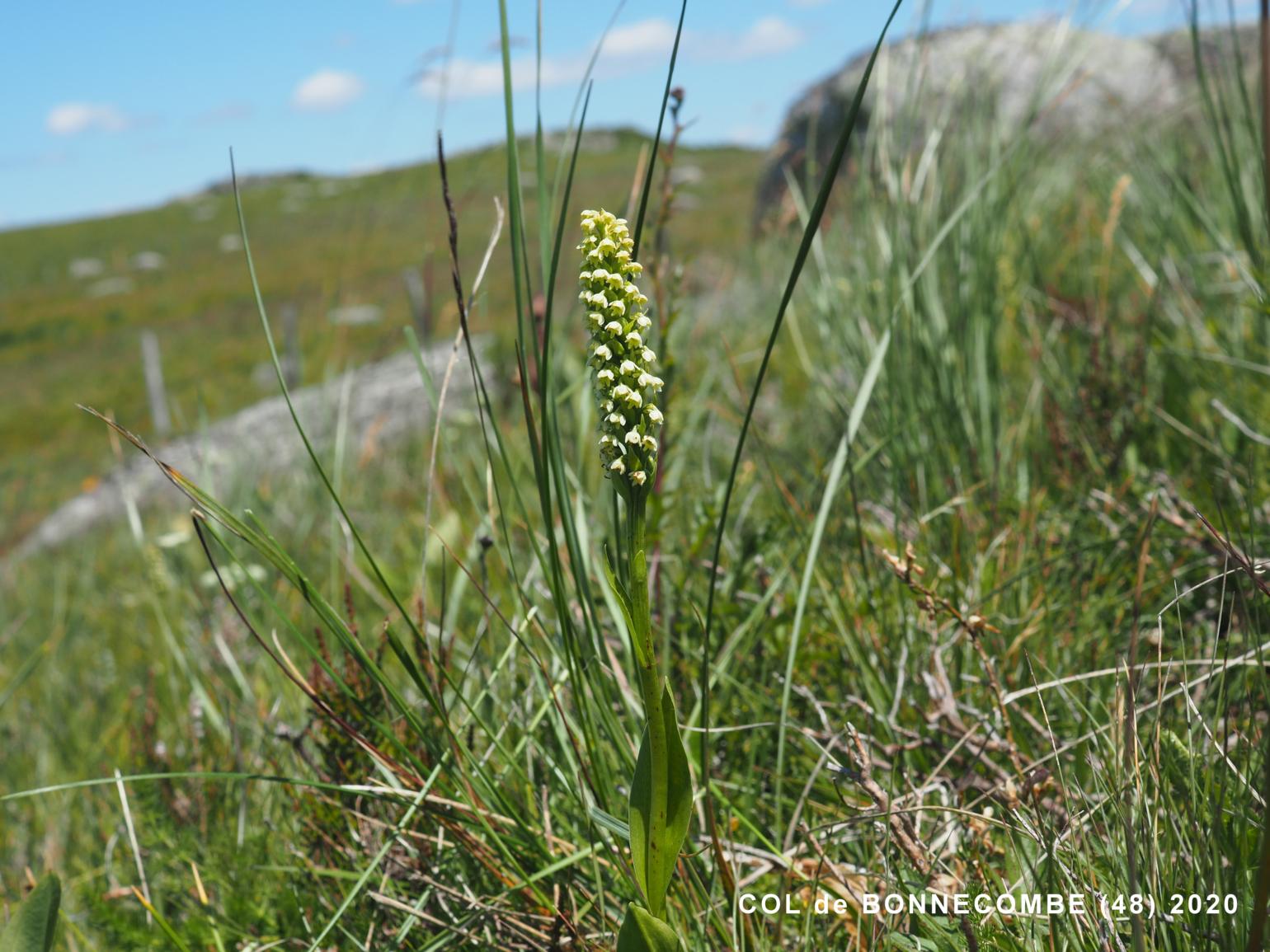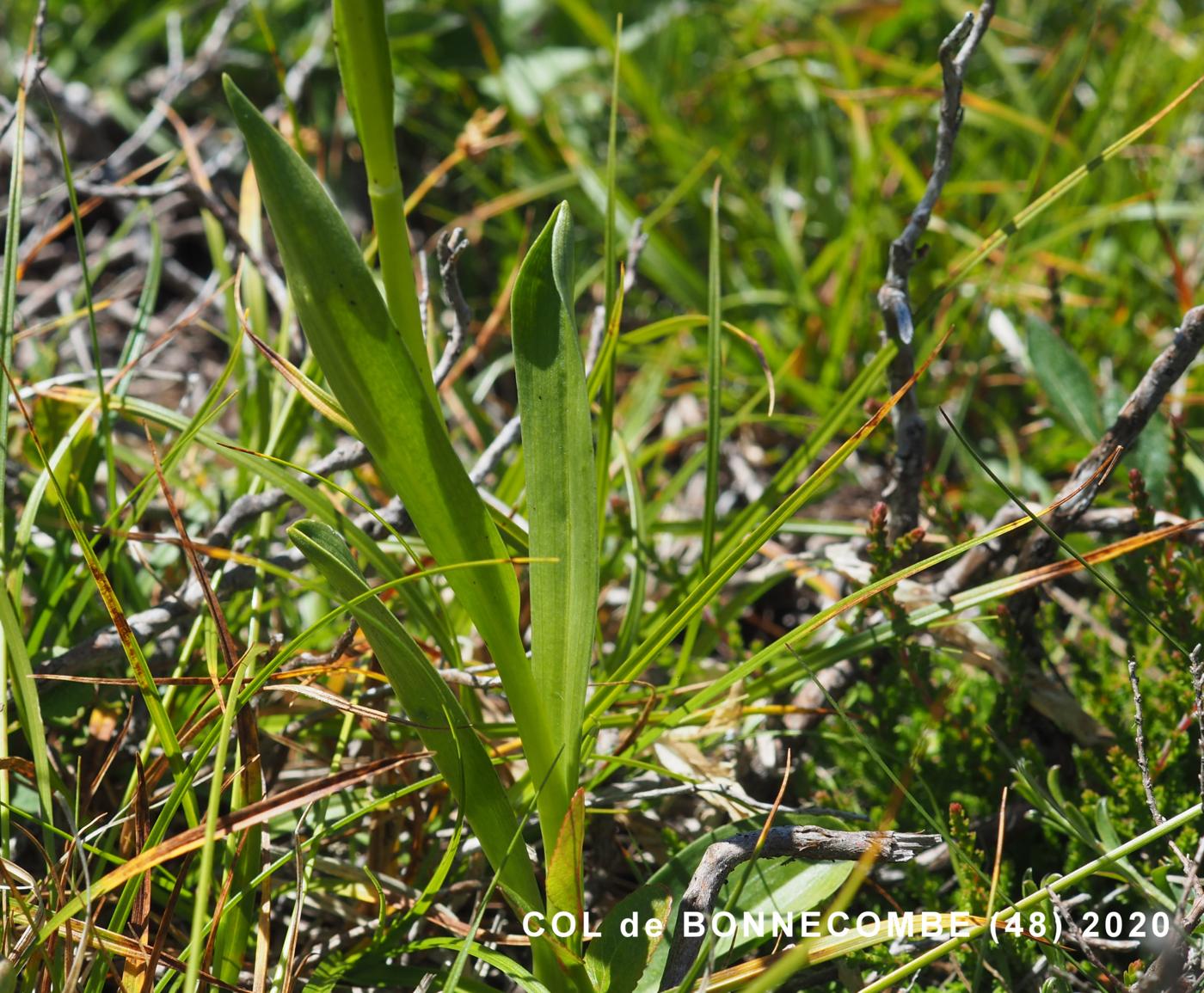 (modifié de Coste, Flore de la France 1937) :
(modifié de Coste, Flore de la France 1937) :
Plante vivace de 10-35 cm, glabre, à tubercules divisés jusque près de la base, allongés, comme fasciculés
Écologie : (répartition d'après la flore) Pâturages et bruyères des hautes montagnes : Ardennes, Vosges, Jura, Alpes, Cévennes et Plateau central, Pyrénées; Normandie.
Répartition hors de France : Europe centrale et boréale; Groenland.
 (modified from translated Coste):
(modified from translated Coste):
NOTE: the French text is more complete and up-to-date
Perennial plant, 10-35 cm, glabrous, tubers divided almost to base, elongated with fasiculated appearance
Ecology UK: Needs balanced grazing, and is now classified as Vulnerable. Not uncommon in small numbers throughout western and northern Scotland, diminishing sites to northern England - France: pasture and heathers of tall mountainous areas: Ardennes, Vosges, Jura, Alps, Cévennes and central plateau, Pyrenees; Normandy.
Distribution outside of France: Central Europe Boreal and; Greenland.
Fleurs : blanchâtres, très petites, en épi grêle cylindracé serré ; bractées égalant ou dépassant l'ovaire;. divisions du périanthe ovales-obtuses, toutes conniventes en casque ovoïde, libres; labelle petit, égalant environ le casque, trifide, à lobes linéaires divergents, le moyen à peine plus grand; éperon obtus (1.5 mm), 2-3 fois plus court que l'ovaire ; rétinacles libres, sans bursicule.
Floraison France : Juin-août.
Flowers: whitish, very small, on a slender but dense cylindrical spike; bracts equalling or exceeding the ovary; divisions of the oval perianth-obtuse, all connivent to form an ovoid hood, free; labellum tri-lobed, small, roughly equalling the hood, divergent linear lobes, the middle lobe a bit larger; spur obtuse (1.5 mm), 2-3 times shorter than the ovary; free viscidium, without bursicule.
Flowering UK: (none) - France: June-August.

 Orchid, Small White
Orchid, Small White
 Orchis blanchâtre
Orchis blanchâtre









 Please
consider
Please
consider 











